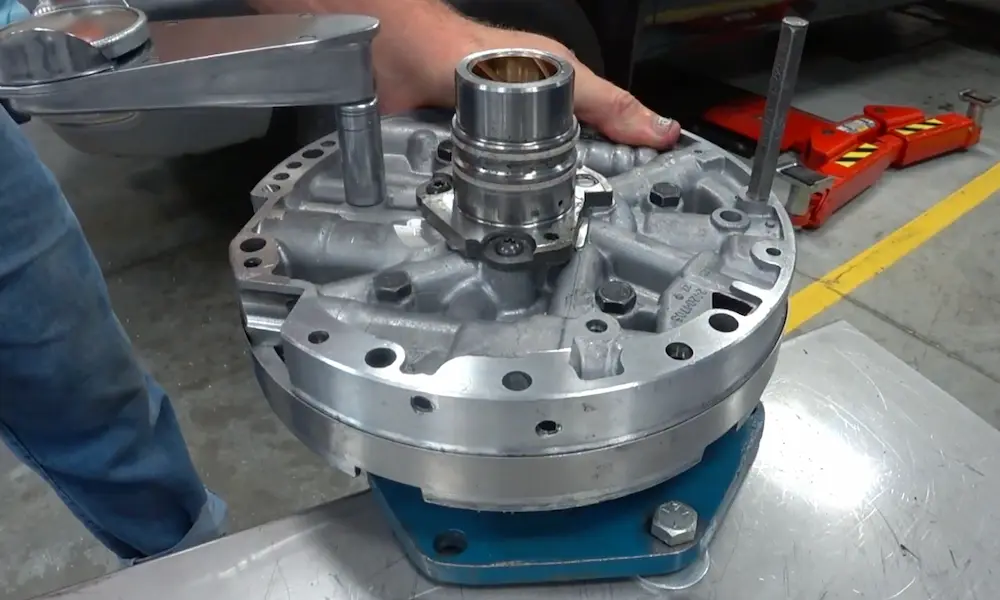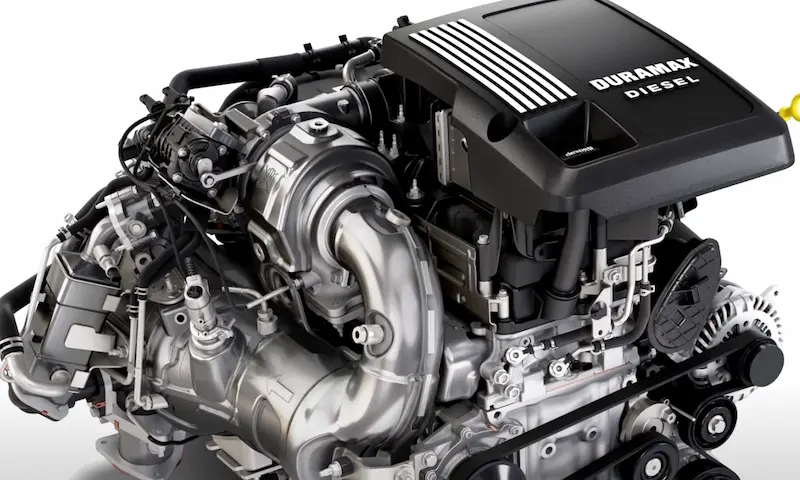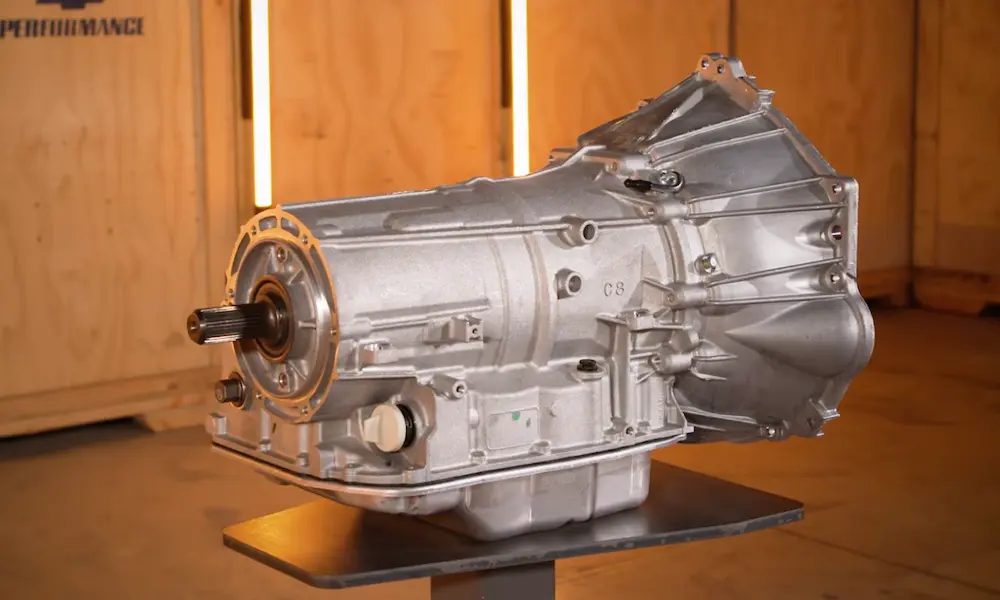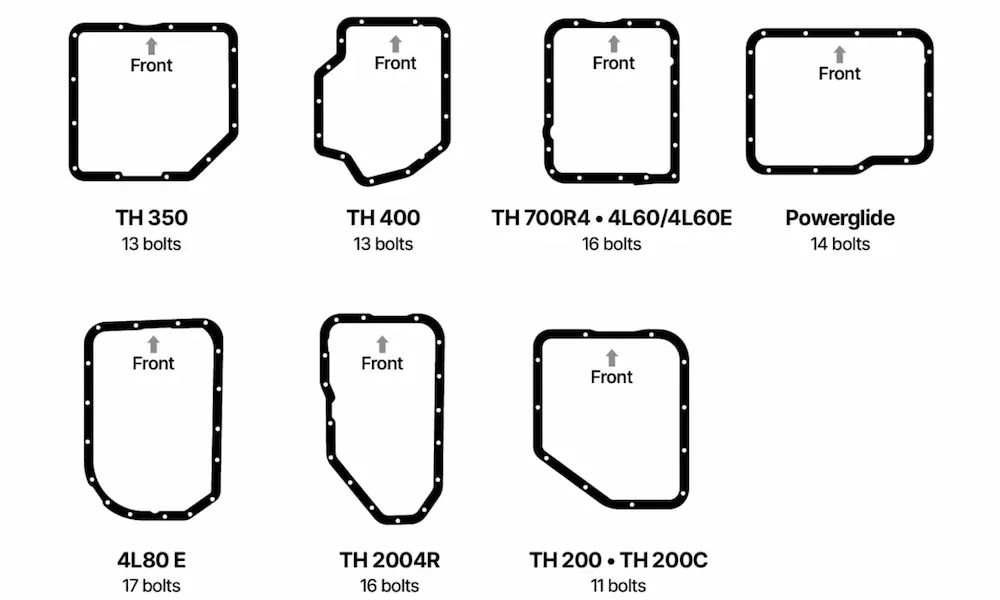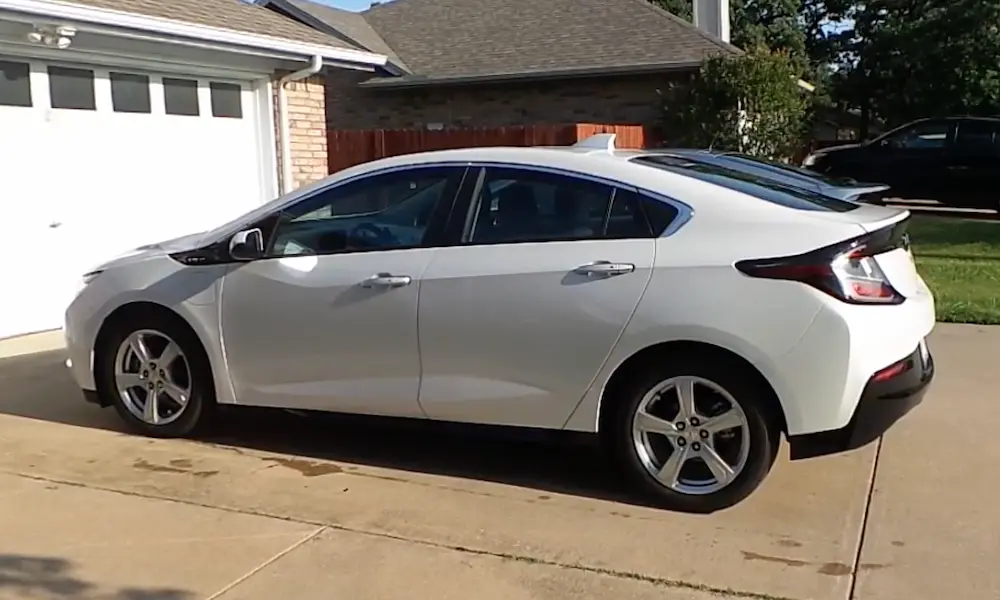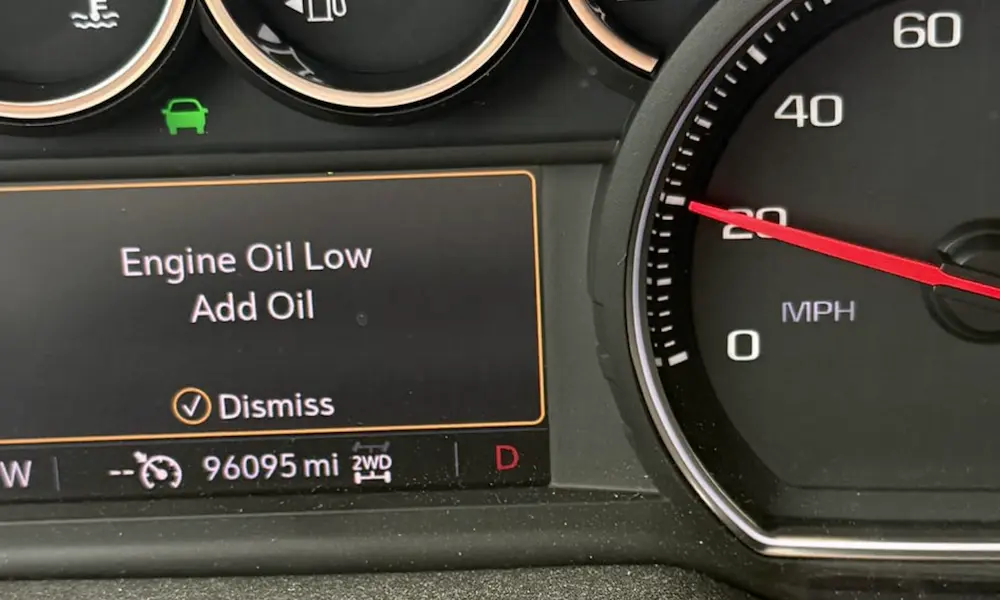Looking to build serious horsepower with GM’s most robust LS-based platform? The LSX engine family represents the pinnacle of GM’s small-block V8 evolution, designed specifically for extreme power applications. Whether you’re planning a drag build, high-performance street car, or just want to understand what makes these engines special, this guide breaks down everything you need to know about LSX engine specifications.
What Makes the LSX Different from Standard LS Engines?
The LSX platform isn’t just a regular LS with a fancy name. GM developed these engines specifically to handle extreme power levels that would destroy standard LS blocks. While they maintain the same external dimensions and mounting points as regular LS engines, LSX blocks feature significant structural improvements:
- Siamese cylinder bores for maximum strength
- Six-bolt cylinder head attachment (vs. four in standard LS)
- Extra-thick deck surfaces that resist warping under boost
- Cross-bolted main caps for superior bottom-end strength
- Cast iron construction (unlike aluminum in many factory LS engines)
These reinforcements allow LSX engines to handle power levels approaching (and even exceeding) 1,000 horsepower when properly built. The exceptional strength of the LSX architecture makes it the preferred choice for serious boost applications and high-rpm naturally aspirated builds.
LSX454: The Flagship Engine
The LSX454 stands as the crown jewel of Chevrolet Performance’s crate engine lineup, offering big-block displacement in a small-block package. This 7.4L powerhouse delivers impressive numbers right out of the crate:
- Displacement: 454 cubic inches (7.4L)
- Bore x Stroke: 4.185″ x 4.125″
- Compression Ratio: 11.0:1
- Horsepower: 627hp @ 6,300rpm
- Torque: 586 lb-ft @ 5,100rpm
- Redline: 6,500rpm
What makes these numbers even more impressive is the all-forged rotating assembly inside, which includes a 4340 forged steel crankshaft, forged connecting rods, and forged aluminum pistons. The LSX454 combines displacement with premium components to deliver exceptional reliability even at high power levels.
LSX454 Component Breakdown
| Component | Specification |
|---|---|
| Block | LSX cast iron with 6-bolt heads |
| Crankshaft | 4340 forged steel (8-bolt flange) |
| Connecting Rods | 4340 forged steel |
| Pistons | Forged aluminum |
| Cylinder Heads | LSX-LS7 aluminum, 70cc chambers |
| Camshaft | Hydraulic roller (0.648″ lift, 236°/246° duration) |
| Compression | 11.0:1 |
| Required Fuel | Premium (92 octane minimum) |
The LSX454 comes without an intake manifold, allowing builders to select the optimal induction system for their specific application. This customization potential makes it versatile for street performance, drag racing, or marine use (with proper marinization).
LSX454 High-Performance Variants
For those who need even more power, specialized versions of the LSX454 push performance further:
LSX454 700hp Complete Engine
This upgraded version kicks things up significantly:
- 725hp @ 6,700rpm
- 580 lb-ft @ 5,200rpm
- 11.5:1 compression ratio
- Operating range of 2,500-6,700rpm
The LSX454 700hp package comes fully assembled with all components, making it a turnkey solution for serious performance builds.
LSX454 Drag Race Engine
Purpose-built for the quarter-mile, the Drag Race version features:
- 13.1:1 compression ratio (race gas only)
- Cast aluminum heads with copper beryllium valve seats
- Titanium intake valves (2.250″) and stainless exhaust valves (1.625″)
- Mechanical adjustable tappet camshaft
This specialized variant is designed exclusively for competition use, delivering extreme performance for dedicated drag applications.
LSX376 Series: Smaller Displacement Options
Not everyone needs (or wants) 454 cubic inches. The LSX376 series offers a more moderate 6.2L displacement while maintaining the LSX platform’s strength advantages:
LSX376-B15
- Displacement: 376 cubic inches (6.2L)
- Bore x Stroke: 4.065″ x 3.622″
- Compression Ratio: 9.0:1 (boost-friendly)
- Power: 450hp @ 5,900rpm
- Torque: 444 lb-ft @ 4,600rpm
- Maximum RPM: 6,600
- Fuel requirement: 87 octane (regular)
The LSX376-B15 features a 9.0:1 compression ratio specifically designed for forced induction applications—hence the “B15” designation, suggesting compatibility with up to 15 pounds of boost. This makes it an ideal starting point for supercharged or turbocharged builds.
Industrial-grade LSX: GM Powered Solutions LSX454
For specialized industrial applications, GM Powered Solutions offers a variant of the LSX454 with different specifications:
- 495-505hp @ 5,400rpm
- 500-515 lb-ft @ 4,400rpm
- 10.0:1 compression ratio
- Variable Valve Timing capability
- Extended life spark plugs
- 58x crank timing
This industrial version prioritizes reliability and durability for continuous-duty applications, sacrificing some peak power for longevity.
LSX vs. Standard LS: Performance Comparison
To understand where LSX engines fit in the LS hierarchy, let’s compare them to their production counterparts:
| Engine | Displacement | Power | Torque | Compression | Notes |
|---|---|---|---|---|---|
| LS1 | 5.7L (346ci) | 345hp | 350 lb-ft | 10.25:1 | Original Gen III |
| LS6 | 5.7L (346ci) | 385-405hp | 385-400 lb-ft | 10.5:1 | Enhanced LS1 |
| LS2 | 6.0L (364ci) | 400hp | 400 lb-ft | 10.9:1 | Gen IV base |
| LS3 | 6.2L (376ci) | 430hp | 424 lb-ft | 10.7:1 | Improved flow |
| LS7 | 7.0L (427ci) | 505hp | 470 lb-ft | 11.0:1 | Dry sump |
| LS9 | 6.2L (376ci) | 638hp | 604 lb-ft | 9.1:1 | Supercharged |
| LSX376-B15 | 6.2L (376ci) | 450hp | 444 lb-ft | 9.0:1 | Boost-ready |
| LSX454 | 7.4L (454ci) | 627hp | 586 lb-ft | 11.0:1 | Max N/A power |
This comparison highlights how LSX engines bridge the gap between production LS engines and custom race motors, offering exceptional power potential with factory engineering backing.
Key Technical Details of LSX Block Architecture
The foundation of every LSX engine is its distinctive block design. The LSX block incorporates numerous technical advantages over standard LS blocks:
Block Specifications
- Material: Cast iron with siamese bores
- Main cap design: Six-bolt, cross-bolted for maximum strength
- Head bolt pattern: Six-bolt per cylinder (vs. four in standard LS)
- Maximum bore size: 4.200″ (potential for up to 511ci/8.4L displacement)
- Deck surface: Extra-thick for improved sealing under extreme pressure
- Priority main oiling system for consistent lubrication under high-G loads
These reinforced block features allow LSX engines to handle significantly higher cylinder pressures than factory blocks—making them ideal for applications involving high compression, forced induction, or nitrous oxide.
Cylinder Head Technology
LSX engines utilize advanced cylinder head designs that maximize airflow while maintaining strength:
- LSX-LS7 port aluminum cylinder heads (on LSX454)
- 70cc combustion chambers (standard configuration)
- Rectangular intake ports based on LS7 design
- 2.200″ titanium intake valves (LSX454 Drag Race)
- 1.610″ hollow sodium-filled exhaust valves
- Multi-angle valve seats for improved flow
- 12° valve angle for improved combustion efficiency
The LSX head design prioritizes high-RPM breathing while maintaining compatibility with standard LS valvetrain components, making it easier to service and modify.
Practical Considerations When Using LSX Engines
Before dropping an LSX into your project, there are several practical factors to consider:
Installation Notes
- LSX454 valve covers lack provisions for mounting ignition coil brackets; aftermarket solutions are required
- 8-bolt crankshaft flange may require an adapter for certain transmissions
- Most engines ship without intake manifolds, allowing customization
- High compression ratios (11.0:1+) require premium fuel
- Standard LSX454 is not compatible with forced induction without reducing compression
Engine Management
Most LSX crate engines require:
- Appropriate engine controller (not included with crate engine)
- Custom tuning for optimal performance
- Fuel system capable of supporting high horsepower (minimum 58 PSI)
- High-capacity cooling system to manage increased heat rejection
Proper engine management is critical for reliability, especially when pushing these engines to their potential.
LSX Engine Applications
The LSX platform’s combination of strength and performance makes it ideal for several applications:
- Pro-touring and restomod muscle cars
- Drag racing (particularly LSX454 Drag Race variant)
- Street/strip cars requiring extreme reliability
- Forced induction builds targeting 1000+ horsepower
- Marine applications (with appropriate marinization)
- Specialized industrial applications
Many builders select LSX blocks even for moderate power goals simply for the peace of mind that comes with their substantial strength margins.
Building on the LSX Platform
While Chevrolet Performance offers complete crate engines, the LSX platform also serves as an excellent foundation for custom builds:
- Bare LSX blocks allow complete customization of displacement and components
- Aftermarket parts availability is extensive
- Head studs can replace bolts for extreme boost applications
- Aftermarket intake manifolds range from single-plane race designs to dual-plane street versions
- Camshaft profiles can be tailored to specific applications
The flexibility of the LSX architecture makes it suitable for nearly any high-performance V8 application, from street cruisers to dedicated competition engines.
The Evolution of LS Technology
The LSX represents the culmination of GM’s LS engine development, which began with the introduction of the original LS1 in 1997. Key innovations in the LS family include:
- Deep-skirt engine blocks for improved rigidity
- Six-bolt main bearing caps for increased strength
- High-flow cylinder head designs
- Powder-forged connecting rods for durability
- Distributorless ignition with individual coil-near-plug technology
- Improved oiling system design
The LSX takes these foundational elements and reinforces them for extreme performance, creating an engine platform capable of handling power levels that would destroy standard production blocks.
GM Powered Solutions Industrial Applications
Beyond performance cars, LSX engines have found homes in industrial applications through GM Powered Solutions. Their LSX454 variant features:
- Variable Valve Timing for improved efficiency
- Extended life spark plugs for reduced maintenance
- 58x crank timing for precise control
- Tuned for continuous-duty operation
These industrial adaptations demonstrate the versatility of the LSX architecture beyond pure performance applications.
The Future of LSX Technology
While GM has transitioned to the newer LT engine architecture for production vehicles, the LSX platform continues to evolve in the performance aftermarket. Recent developments include:
- CNC-ported cylinder heads with improved flow characteristics
- Advanced camshaft profiles utilizing newer lobe design technology
- Specialty block preparations for extreme boost applications
- Integration with modern direct injection systems in hybrid builds
These ongoing developments ensure that LSX engines remain relevant even as newer technologies emerge, combining proven durability with cutting-edge performance innovations.
The LSX platform represents GM’s most serious commitment to high-performance V8 engines, offering exceptional strength, impressive power, and the flexibility to serve in applications ranging from street cruisers to professional racing. Whether you’re building a show-stopping pro-touring car or a record-setting drag racer, the LSX provides a rock-solid foundation for your performance goals.



